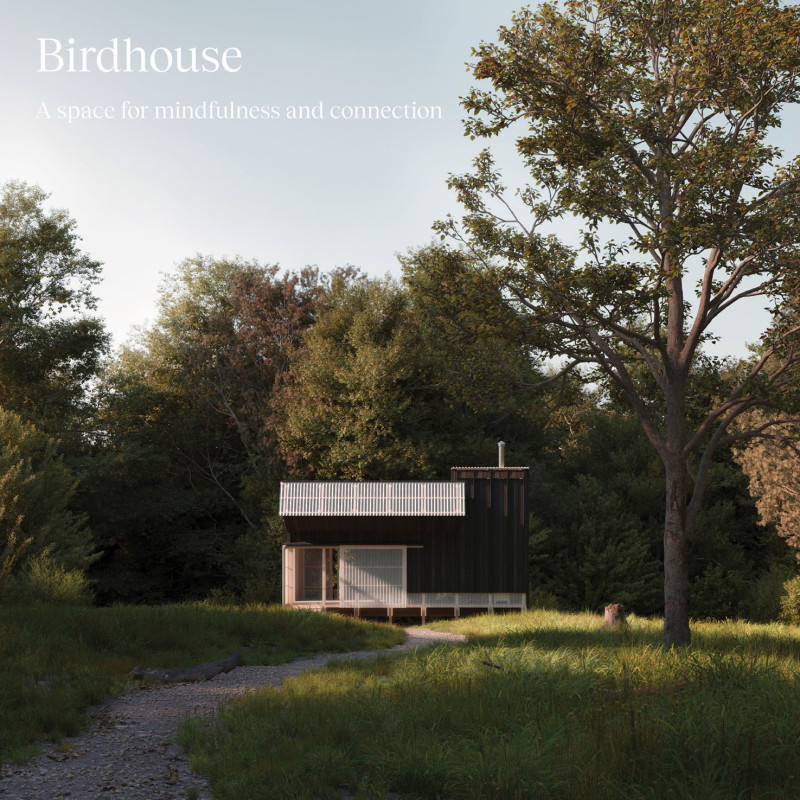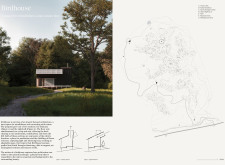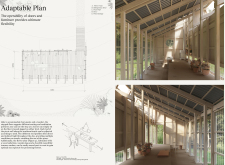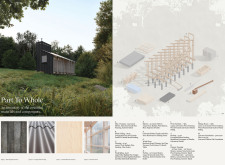5 key facts about this project
Birdhouse is an architectural work designed to create a calm environment for mindfulness and meditation. Located in a natural setting, it is divided into two main sections: the Chimney and the Lightwell. These parts work together to bring in natural light and warmth, offering a space that adapts to the needs of its users while promoting a deep connection with the surrounding landscape.
Design Flexibility
The layout of Birdhouse encourages flexibility in how the space is used. The stepped floor functions as both seating and a step, allowing four guests and a teacher to gather comfortably. This design supports various seating and meditation styles, making it suitable for both personal practice and group activities. A pivot wall on the southern side adds to this versatility, enabling adjustments to the layout as needed, which enriches the user experience.
Climatic Sensitivity
The design reflects careful consideration of the local climate. The southern and northern facades are adjustable, allowing for different levels of ventilation and natural views. This feature helps maintain a connection with the outdoors throughout the year. In colder months, a wood stove enhances comfort, ensuring the space remains usable and pleasant across seasons while keeping the focus on the overall experience within the building.
Material Selection
Material choices play a significant role in Birdhouse’s design. Radiate New Zealand Pine, sourced locally, serves as both the main structure and cladding. This choice supports sustainability by reducing transportation needs and celebrates local resources. The exterior treatment involves Shou Sugi Ban, a wood preservation method that charred the surface for protection and aesthetic appeal. Recycled corrugated PVC panels and corrugated metal roofing contribute to the building's durability and ease of care.
Birdhouse achieves a balance between functionality and a connection to nature. Carefully placed openings frame the landscape, allowing natural light to illuminate the space while keeping a strong link to the outside world. This attention to detail fosters a sense of belonging and encourages occupants to engage with their environment more fully.






















































